To grade a Barber Half Dollar, examine the “LIBERTY” headband on the obverse and eagle feather details on the reverse. In Good (G-4) condition, no letters are visible and the eagle is worn flat. Very Good (VG-8) shows at least three letters and a few breast feathers. Fine (F-12) displays all seven “LIBERTY” letters with half the eagle’s feathers visible. Very Fine (VF-20) features bold, complete lettering and most feathers showing. Check Liberty’s hair, laurel wreath, and rim condition on the obverse, plus the eagle’s breast, wings, and “E PLURIBUS UNUM” inscription on the reverse. Professional authentication is recommended for valuable specimens to ensure accurate grading.
Grading a Barber Half Dollar requires careful examination of specific design elements that wear predictably over time. The headband inscription and eagle feather details serve as primary indicators of a coin’s grade, directly affecting values that range from $15 for heavily worn examples to over $1,500 for mint state specimens. Understanding these grading standards helps collectors make informed purchasing decisions and properly value their holdings.
Understanding the Barber Half Dollar Design
Charles E. Barber designed this fifty-cent piece, minted from 1892 to 1915 across three facilities: Philadelphia (no mint mark), Denver (D), and San Francisco (S). The obverse features Liberty’s right-facing profile wearing a Phrygian cap with a laurel wreath and a headband inscribed with “LIBERTY.” The reverse displays a heraldic eagle holding arrows and an olive branch, with a shield on its breast. These high-relief design elements experience wear in consistent patterns, making systematic grading possible.
The highest points of the design wear first during circulation. On the obverse, Liberty’s cheek, the headband, and the upper hair details lose definition earliest. On the reverse, the eagle’s breast feathers, wing tips, and leg feathers flatten before other areas. Recognizing these wear patterns allows accurate grade determination without professional submission for most circulated examples.
Evaluating the “LIBERTY” Headband Inscription
The headband provides the most critical grading reference point for Barber Half Dollars. This seven-letter inscription wears progressively, with specific visibility standards defining grade boundaries.
At the Good (G-4) level, the headband shows no discernible letters. Complete flatness characterizes this grade, with the headband appearing as a smooth ribbon across Liberty’s forehead. These specimens typically trade between $15 and $25 depending on date and mint mark.
Very Good (VG-8) examples display at least three letters, most commonly “LI” at the beginning and “Y” at the end, with central letters obliterated. The headband’s outline remains visible as a distinct band. Values for common dates in VG-8 range from $25 to $40.
Fine (F-12) coins show all seven letters, though the bottoms may appear weak or incomplete. The “B” and “R” often merge slightly, but each letter remains identifiable. This grade represents the minimum acceptable condition for many collectors, with prices starting around $40 for common dates.
Very Fine (VF-20) specimens exhibit bold, complete letters with clear separation. Each character stands distinctly against the headband background. The tops and bottoms of all letters show sharp definition. Common dates in VF-20 condition command $75 to $125.
Assessing Obverse Hair and Laurel Wreath Details
Beyond the headband, the hair texture above Liberty’s forehead and the laurel wreath provide secondary grading indicators.
Good (G-4) coins show Liberty’s portrait worn nearly flat. The cheek merges with surrounding features, and individual hair strands disappear completely. The laurel wreath appears as an outlined shape without internal leaf definition. The rim may touch or overlap peripheral lettering in spots.
Very Good (VG-8) examples maintain a full rim clearly separated from letters and date. Hair shows some texture but remains mostly smooth. Three to four individual laurel leaves become distinguishable within the wreath, though most detail remains worn away.
Fine (F-12) specimens reveal moderate hair texture above the eye, with four to six visible hair strands. The laurel wreath displays roughly half its original leaf detail. Liberty’s ear shows partial definition, and the ribbon bow behind her neck becomes visible as a distinct element.
Very Fine (VF-20) coins exhibit well-defined hair with eight to ten visible strands above the forehead. The laurel wreath shows three-quarters of its leaf detail with clear vein lines in several leaves. Liberty’s facial features appear sharp, with the jawline and chin clearly separated from the neck.
Examining Eagle Feather Patterns on the Reverse
The reverse eagle provides equally important grading information, with feather detail serving as the primary indicator.
Good (G-4) grade reverses show the eagle worn completely flat. No individual feathers appear on the breast, wings, or legs. The shield remains outlined but lacks internal striping. “E PLURIBUS UNUM” on the ribbon may have one or two letters completely worn away.
Very Good (VG-8) examples begin showing breast feather texture, with two to four individual feathers visible at the wing-body junction. The shield displays partial stripes, typically three to five visible. Most letters in “E PLURIBUS UNUM” remain readable, though weak.
Fine (F-12) specimens reveal approximately half the eagle’s feather detail. Ten to fifteen distinct breast feathers appear, with separation visible between upper wing feathers. All shield stripes show, though some may appear faint. Every letter in “E PLURIBUS UNUM” remains visible.
Very Fine (VF-20) coins display three-quarters of original feather detail. Twenty-five to thirty-five breast feathers show clear separation. Wing feathers demonstrate distinct rows with visible individual features. The eagle’s leg feathers begin appearing as separate elements rather than merged masses.
Higher Grade Characteristics and Value Differences
Extremely Fine (EF-40) represents a significant value jump for Barber Half Dollars. At this grade, light wear appears only on the highest design points. The headband shows complete separation between all letters and the background field. Every hair strand above Liberty’s forehead remains visible, though the very highest points show slight flattening. The eagle’s breast feathers separate completely, with only the highest central feathers showing minimal wear. Common dates in EF-40 condition range from $175 to $300.
About Uncirculated (AU-50) coins retain 90% of original mint luster, with friction visible on Liberty’s cheek and the eagle’s breast. No actual wear appears in protected areas like between letters or in feather crevices. These specimens command $350 to $600 for typical dates.
Mint State (MS-60 to MS-65) examples show no circulation wear. Grading at these levels focuses on strike quality, luster, and contact marks rather than wear patterns. An MS-63 common date Barber Half Dollar typically sells for $500 to $800, while MS-65 examples reach $1,200 to $2,000.
| Grade | Headband | Breast Feathers | Common Date Value |
|---|---|---|---|
| G-4 | No letters visible | Completely flat | $15-$25 |
| VG-8 | 3 letters (LI_Y) | 2-4 feathers | $25-$40 |
| F-12 | All 7 letters weak | 10-15 feathers | $40-$65 |
| VF-20 | All letters bold | 25-35 feathers | $75-$125 |
| EF-40 | Sharp separation | Nearly complete | $175-$300 |
| AU-50 | Full detail | Complete detail | $350-$600 |
| MS-63 | Perfect detail | Perfect detail | $500-$800 |
Recognizing Problem Coins and Cleaning
Environmental damage, cleaning, and alterations significantly impact Barber Half Dollar values regardless of technical grade. Cleaned coins exhibit unnatural brightness, hairline scratches in the fields, or dull, lifeless surfaces. Even a properly graded VF-20 specimen loses 40-60% of its value if cleaned.
Corrosion appears as green or brown crusty deposits, particularly around letters and in crevices. This damage cannot be reversed and permanently lowers the grade designation. Professional grading services add qualifiers like “Cleaned,” “Corroded,” or “Environmental Damage” to holder labels, warning potential buyers.
Artificial toning through chemical application creates unnatural color patterns. Legitimate toning develops gradually over decades, producing even gradations from rim to center. Chemical toning shows irregular splotches, unnatural rainbow patterns, or colors that appear “painted on” rather than naturally oxidized into the metal.
Professional Grading Considerations
Third-party grading from PCGS or NGC provides authentication and standardized grade opinions for valuable specimens. Coins worth $100 or more in raw condition generally justify the $30-$50 grading fee plus shipping and insurance costs.
Professional grading offers particular value for Extremely Fine and better examples, where single-point grade differences create substantial price gaps. An AU-55 versus AU-58 determination might represent a $200 value difference for scarcer dates. These services also guarantee authenticity, eliminating concerns about counterfeits or altered dates.
For common-date circulated examples below VF-20, self-grading using these standards provides sufficient accuracy for most collecting purposes. Purchasing grading guides with high-resolution photographs of each grade level aids learning, with the Official ANA Grading Standards serving as the hobby reference.
Building Grading Skills Through Practice
Developing reliable grading ability requires examining numerous authenticated examples. Most coin shows feature dealers with inventory across multiple grades, providing hands-on comparison opportunities. Examining five to ten professionally graded specimens at each grade level builds visual memory for proper standards.
Online auction archives from Heritage Auctions and GreatCollections preserve high-resolution images of sold coins with certified grades. Studying these photographs trains the eye to recognize subtle detail differences between adjacent grades. Search for “Barber Half Dollar” with specific grade modifiers like “VF-20” or “EF-40” to find relevant examples.
Local coin clubs often conduct grading exercises where members independently grade raw coins, then compare results and discuss observations. This peer interaction accelerates learning and reveals individual grading tendencies toward conservative or liberal assessments. Most collectors develop consistent accuracy within one grading point after examining 50-100 properly attributed examples.
Maximizing Your Collection’s Value Through Accurate Assessment
Proper grading directly affects buying and selling decisions throughout your collecting journey. Overgrading leads to overpaying for acquisitions, while undergrading causes selling below fair market value. These systematic evaluation methods provide consistent, defendable grade opinions aligned with market standards.
Start by examining your current Barber Half Dollars using the headband and feather criteria detailed above. Photograph any coins you grade EF-40 or better for potential professional submission. Consider replacing heavily worn examples with VF-20 or better specimens, as these grades retain detail that makes the design appreciable. Focus acquisition efforts on problem-free coins with original surfaces, even if this means accepting slightly lower technical grades than cleaned higher-grade alternatives.
You may be interested:
- 1776 To 1976 Bicentennial Half Dollar Coin Value Complete Errors List And What Your D S And No Mint Mark Coins Are Actually Worth
- 1917 Half Dollar Coin Value Guide D S No Mint Mark Errors List And What Each Is Worth
- 1920 Half Dollar Coin Value Complete Guide D S No Mint Mark Worth Plus Error List
- 1925 Stone Mountain Half Dollar Coin Value Guide Errors List No Mint Mark Worth And Price Ranges From 60 To 15000
- 1935 Half Dollar Coin Value Guide D S No Mint Mark Worth And Complete Errors List
- 1936 Half Dollar Coin Value Guide D S And No Mint Mark Worth Plus Complete Errors List
- How To Grade Peace Silver Dollar Using The Sheldon Scale And Key Wear Areas
- How To Grade Walking Liberty Half Dollar Inspect High Points Luster And Wear For Accurate Assessment

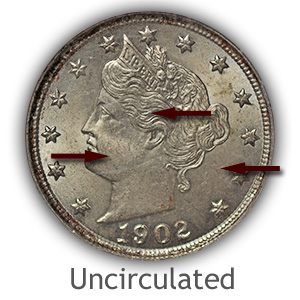
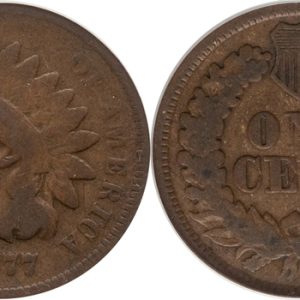
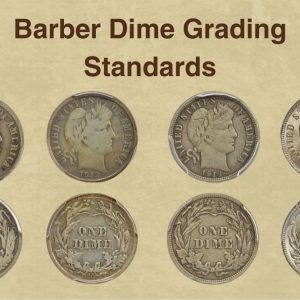
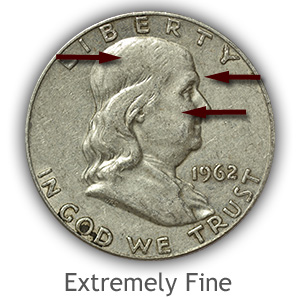
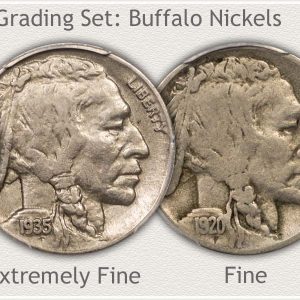
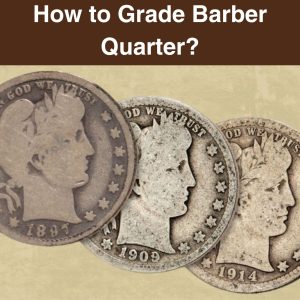
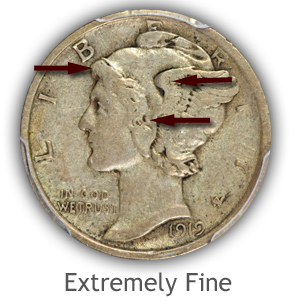

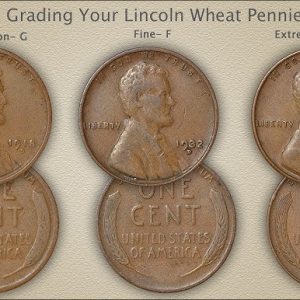
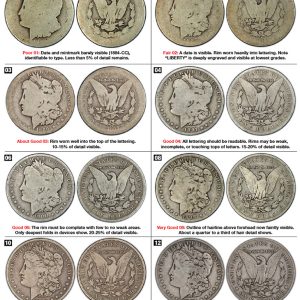
Are barber half dollars worth anything?
Generally, however, the price range where you will find most Barbers is anywhere from $10 to $500, with better preserved coins taking up the higher price tags.
How are half dollars graded?
On the reverse. The high points are noticeable on the eagle’s neck the back portion of the eagle’s. Head. And the center tail feather and the center arrow the eagle is holding in his left talon.
How can you tell a real barber half dollar?
The date on the obverse of the counterfeit is irregular, but sharp and crisp on the authentic coin. The stars are blob-like and amorphous on the fake, but clearly rendered on the real deal.
How much silver is in a barber half dollar?
Weight: Each coin weighs 12.5 grams, with 11.25 grams being pure silver. Composition: The coin is made of 90% silver and 10% copper. Standard: This composition was mandated by the Coinage Act of 1873.